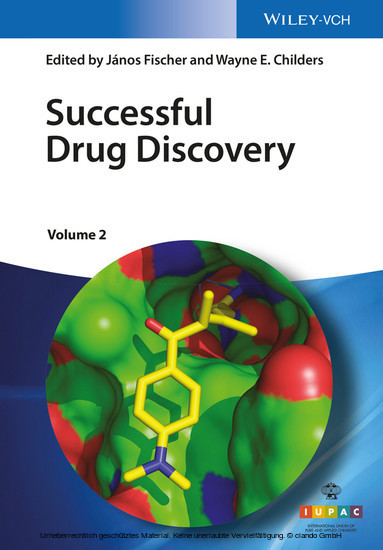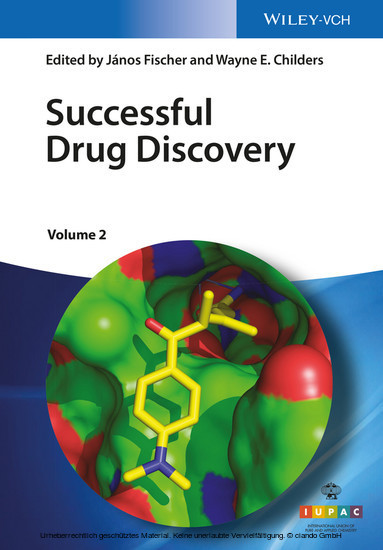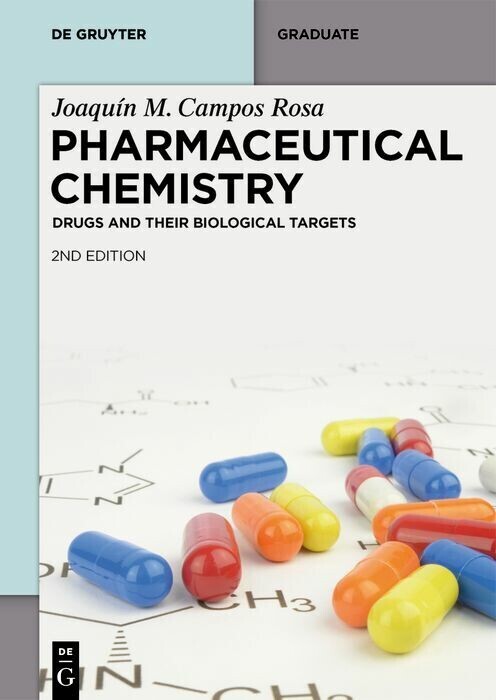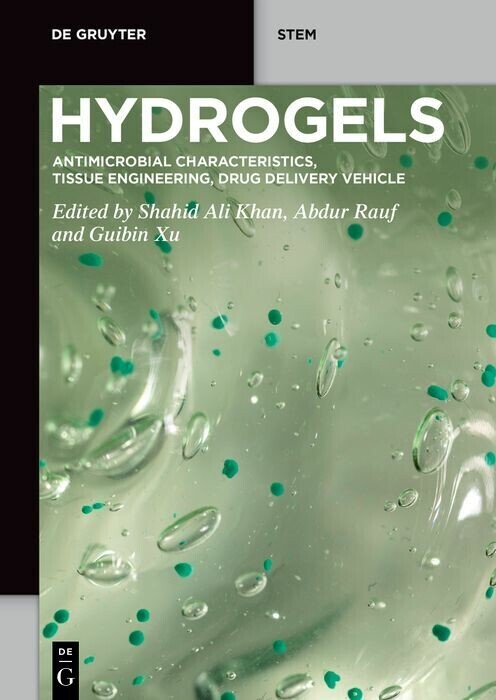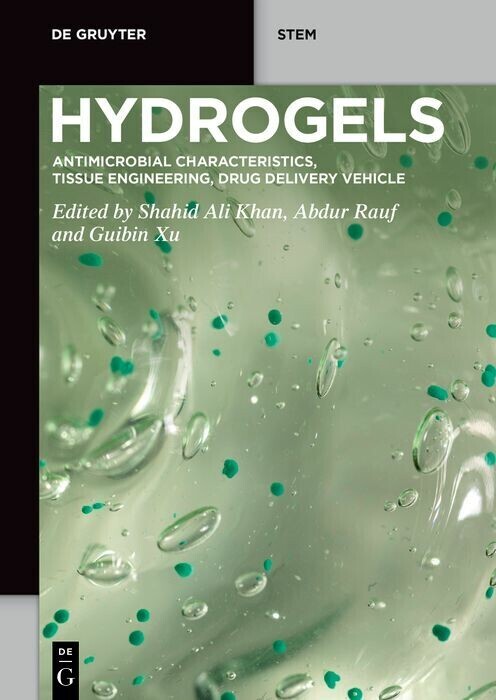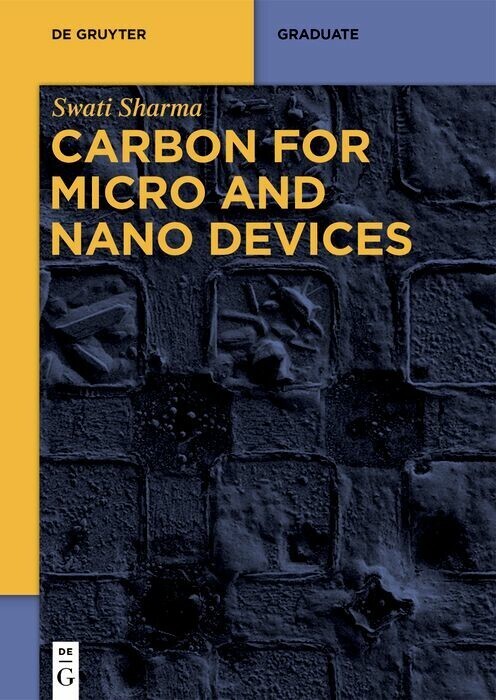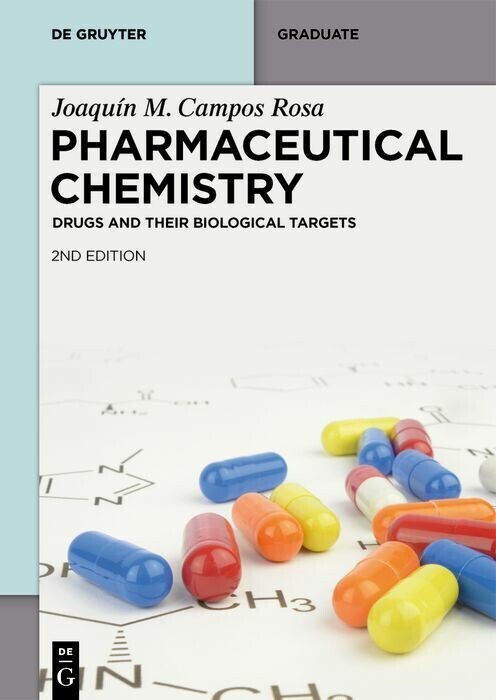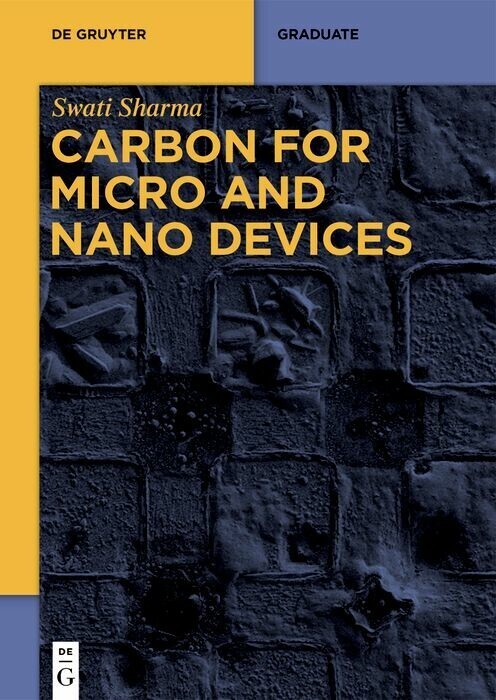Successful Drug Discovery, Volume 2
Retaining the successful approach found in the previous volume in this series, the inventors and primary developers of drugs that successfully made it to market tell the story of the drug's discovery and development and relate the often twisted route from the first candidate molecule to the final marketed drug.
11 selected case studies describe recently introduced drugs that have not been previously covered in textbooks or general references. These range across six different therapeutic fields and provide a representative cross-section of the current drug development efforts. Backed by copious data and chemical information, the insight and experience of the contributors makes this one of the most useful training manuals that a junior medicinal chemist can hope to find and has won the support and endorsement of IUPAC.
Janos Fischer is a Senior Research Scientist at Richter Plc., Budapest, Hungary. He received his MSc and PhD degrees in organic chemistry from the Eotvos University of Budapest under Professor A. Kucsman. Between 1976 and 1978, he was a Humboldt Fellow at the University of Bonn under Professor W. Steglich. He has worked at Richter Plc. since 1981 where he participated in the research and development of leading cardiovascular drugs in Hungary. His main interest is analogue based drug discovery. He is the author of some 100 patents and scientific publications. Since 2014 he is Chair of the Subcommittee on Drug Discovery and Development of IUPAC. He received an honorary professorship at the Technical University of Budapest.
Wayne Childers is Associate Professor of Pharmaceutical Sciences at Temple University, Philadelphia, USA. Wayne received his BA (1979) degree from Vanderbilt University in chemistry and PhD (1984) in organic chemistry from the University of Georgia under the direction of Harold Pinnick. He served as an Assistant Adjunct Professor at Bucknell University before accepting a position as a postdoctoral fellow at the Johns Hopkins University School of Medicine in the laboratories of Dr. Cecil Robinson. He then joined Wyeth Research, Inc., working in numerous therapeutic areas, including psychiatric diseases, stroke, and Alzheimer's disease, and the treatment of chronic pain. He stayed with Wyeth for 22 years, before joining the faculty of Temple University in 2010.
11 selected case studies describe recently introduced drugs that have not been previously covered in textbooks or general references. These range across six different therapeutic fields and provide a representative cross-section of the current drug development efforts. Backed by copious data and chemical information, the insight and experience of the contributors makes this one of the most useful training manuals that a junior medicinal chemist can hope to find and has won the support and endorsement of IUPAC.
Janos Fischer is a Senior Research Scientist at Richter Plc., Budapest, Hungary. He received his MSc and PhD degrees in organic chemistry from the Eotvos University of Budapest under Professor A. Kucsman. Between 1976 and 1978, he was a Humboldt Fellow at the University of Bonn under Professor W. Steglich. He has worked at Richter Plc. since 1981 where he participated in the research and development of leading cardiovascular drugs in Hungary. His main interest is analogue based drug discovery. He is the author of some 100 patents and scientific publications. Since 2014 he is Chair of the Subcommittee on Drug Discovery and Development of IUPAC. He received an honorary professorship at the Technical University of Budapest.
Wayne Childers is Associate Professor of Pharmaceutical Sciences at Temple University, Philadelphia, USA. Wayne received his BA (1979) degree from Vanderbilt University in chemistry and PhD (1984) in organic chemistry from the University of Georgia under the direction of Harold Pinnick. He served as an Assistant Adjunct Professor at Bucknell University before accepting a position as a postdoctoral fellow at the Johns Hopkins University School of Medicine in the laboratories of Dr. Cecil Robinson. He then joined Wyeth Research, Inc., working in numerous therapeutic areas, including psychiatric diseases, stroke, and Alzheimer's disease, and the treatment of chronic pain. He stayed with Wyeth for 22 years, before joining the faculty of Temple University in 2010.
1;Cover;1 2;Main title;5 3;Copyright page;6 4;Contents;9 5;Preface;15 6;List of Contributors;19 7;Part I HDAC Inhibitor Anticancer Drug Discovery;23 7.1;1 From DMSO to the Anticancer Compound SAHA, an Unusual Intellectual Pathway for Drug Design;25 7.1.1;1.1 Introduction;25 7.1.2;1.2 The Discovery of SAHA (vorinostat);26 7.1.3;1.3 Clinical Trials;29 7.1.4;1.4 Follow-On Research - Selective HDAC Inhibitors;30 7.1.5;1.5 Conclusion;31 7.1.6;References;31 7.2;2 Romidepsin and the Zinc-Binding Thiol Family of Natural Product HDAC Inhibitors;35 7.2.1;2.1 Histone Deacetylases as a Therapeutic Target;35 7.2.2;2.2 The Discovery and Development of Romidepsin;37 7.2.3;2.3 The Zinc-Binding Thiol Family of Natural Product HDAC Inhibitors;40 7.2.4;2.4 Synthetic Analogues of the Zinc-Binding Thiol Natural Products;43 7.2.5;2.5 Summary;45 7.2.6;References;46 7.3;3 The Discovery and Development of Belinostat;53 7.3.1;3.1 Introduction;53 7.3.2;3.2 Discovery of Belinostat;54 7.3.2.1;3.2.1 Design Strategy;54 7.3.2.2;3.2.2 Medicinal Chemistry and SAR;56 7.3.3;3.3 Belinostat Biological Profiling;63 7.3.3.1;3.3.1 Mode of Action and HDAC Isoform Selectivity;63 7.3.3.2;3.3.2 Antiproliferative and Antitumor Activity;64 7.3.4;3.4 Formulation Development;66 7.3.5;3.5 Clinical Development;67 7.3.5.1;3.5.1 Clinical Studies Leading to Approval and Other ClinicalInvestigations;67 7.3.5.2;3.5.2 Pharmacokinetics;71 7.3.5.3;3.5.3 Safety and Tolerability;73 7.3.6;3.6 Conclusions;74 7.3.7;References;75 7.4;4 Discovery and Development of Farydak (NVP-LBH589, Panobinostat) as an Anticancer Drug;81 7.4.1;4.1 Target Identification: From p21Waf1 Induction to HDAC Inhibition;81 7.4.2;4.2 Program Flowchart Assays for Drug Discovery;83 7.4.3;4.3 Hit-To-Lead Campaign: Trichostatin A to LAK974;85 7.4.4;4.4 Lead Optimization: LAK974 to LAQ824;86 7.4.5;4.5 Profiling LAQ824 for Cancer Therapy;88 7.4.6;4.6 Preclinical Development of LAQ824;92 7.4.7;4.7 LAQ824 Follow-Up;94 7.4.8;4.8 Discovery of LBH589;95 7.4.9;4.9 Safety Profile for LBH589;96 7.4.10;4.10 Pan-HDAC Inhibition by LBH589;98 7.4.11;4.11 Cancer Cell-Specific Cytotoxicity of LBH589;98 7.4.11.1;4.11.1 Toxicity and Safety Studies with LBH589;100 7.4.11.2;4.11.2 Early Clinical Activity of LBH589 in CTCL;100 7.4.11.3;4.11.3 Large-Scale Cell Line Profiling to Discover Lineage-SpecificLBH589-Sensitive Cancer Indications;101 7.4.11.4;4.11.4 Clinical Profiling of Heme Malignancies for LBH589 Activity;102 7.4.11.5;4.11.5 Phase II Study of Oral Panobinostat in Hodgkin Lymphoma;103 7.4.11.6;4.11.6 Phase IB Clinical Studies in Multiple Myeloma;104 7.4.11.7;4.11.7 Phase III Registration Study in Relapsed or Refractory Myeloma;104 7.4.11.8;4.11.8 Conclusion and Future Perspective;105 7.4.12;References;107 7.5;5 Discovery and Development of HDAC Subtype Selective Inhibitor Chidamide: Potential Immunomodulatory Activity Against Cancers;111 7.5.1;5.1 Introduction;111 7.5.1.1;5.1.1 Epigenetics and Cancer;111 7.5.1.2;5.1.2 Epigenetic Drugs;112 7.5.2;5.2 Discovery of Chidamide;115 7.5.2.1;5.2.1 Identification of Chemical Scaffold;115 7.5.2.2;5.2.2 Design and Screening New Selective Benzamide HDAC Inhibitors;115 7.5.2.3;5.2.3 Molecular Docking of Chidamide with HDAC2;117 7.5.3;5.3 Molecular Mechanisms of Chidamide;119 7.5.3.1;5.3.1 Selectivity;119 7.5.3.2;5.3.2 Induction of Cell Cycle Arrest, Apoptosis and Differentiation of Tumour Cells;120 7.5.3.3;5.3.3 Reversal of Epithelial to Mesenchymal Transition;121 7.5.3.4;5.3.4 Stimulation of Innate and Antigen-Specific Antitumour Immunity;121 7.5.3.5;5.3.5 Multiplicity of Anticancer Mechanisms by Chidamide;122 7.5.4;5.4 Animal Studies;123 7.5.5;5.5 Clinical Development;123 7.5.5.1;5.5.1 Pharmacokinetics and Pharmacodynamics;123 7.5.5.2;5.5.2 Unmet Medical Needs for Peripheral T-Cell Lymphoma (PTCL);124 7.5.5.3;5.5.3 Efficacy Assessment of Chidamide in PTCL Patients;125 7.5.5.4;5.5.4 Safety Profile;127 7.5.6;5.6 Future Perspective;128 7.5.7;References;130 8;Part II Steroidal CYP17 Inhibitor Ant
Fischer, Janos
Childers, Wayne E.
| ISBN | 9783527800322 |
|---|---|
| Artikelnummer | 9783527800322 |
| Medientyp | E-Book - PDF |
| Copyrightjahr | 2016 |
| Verlag | Wiley-VCH |
| Umfang | 292 Seiten |
| Sprache | Englisch |
| Kopierschutz | Adobe DRM |

